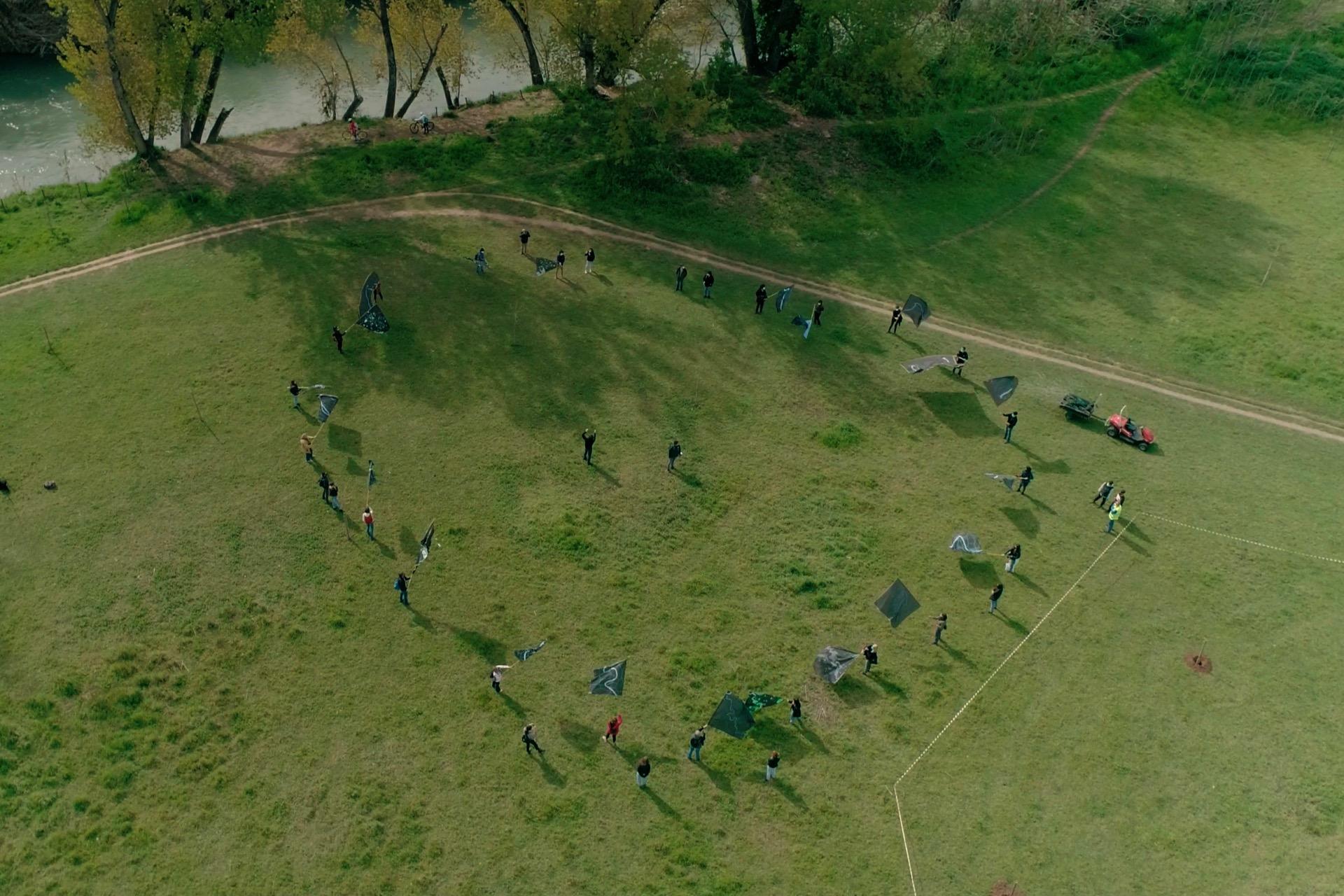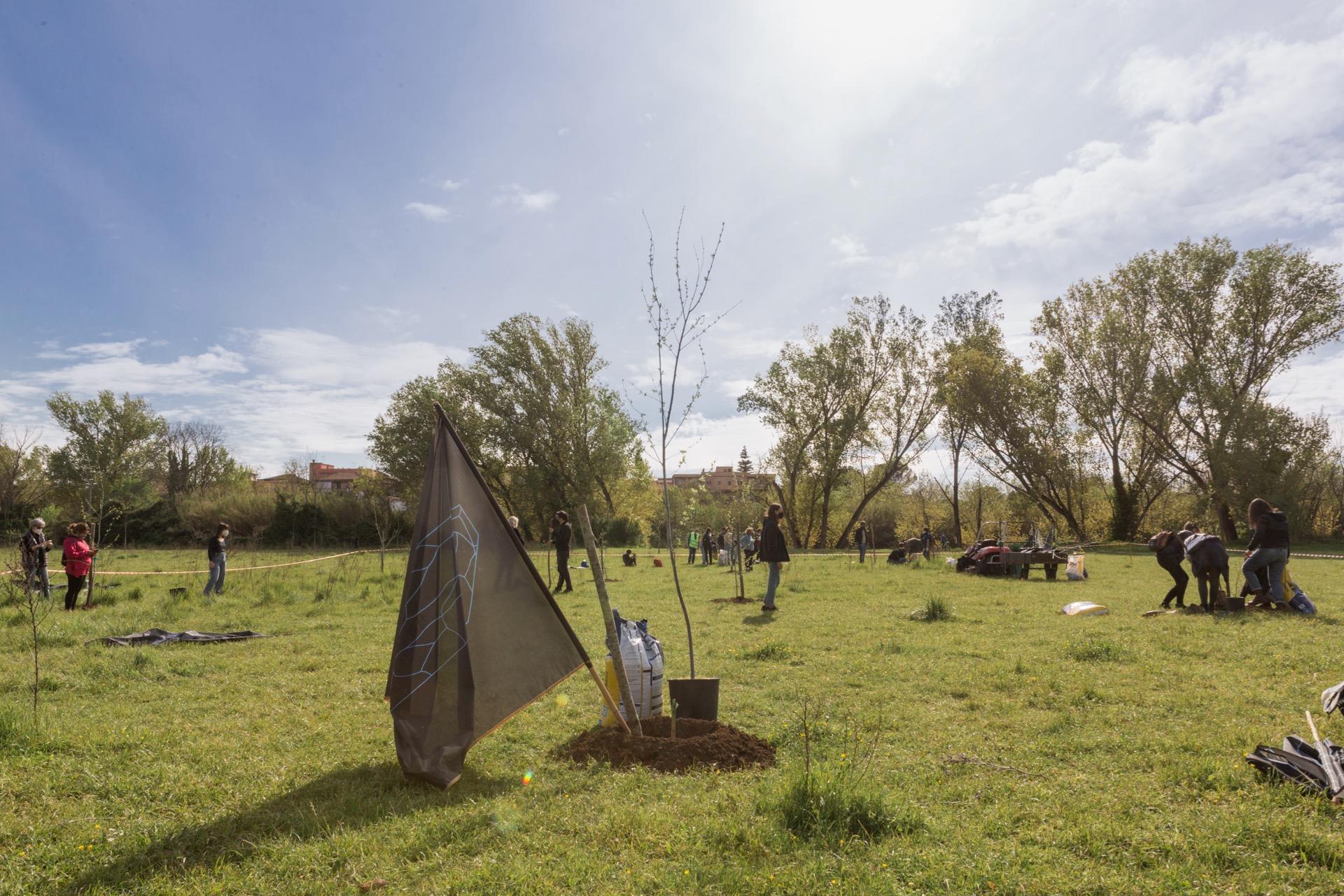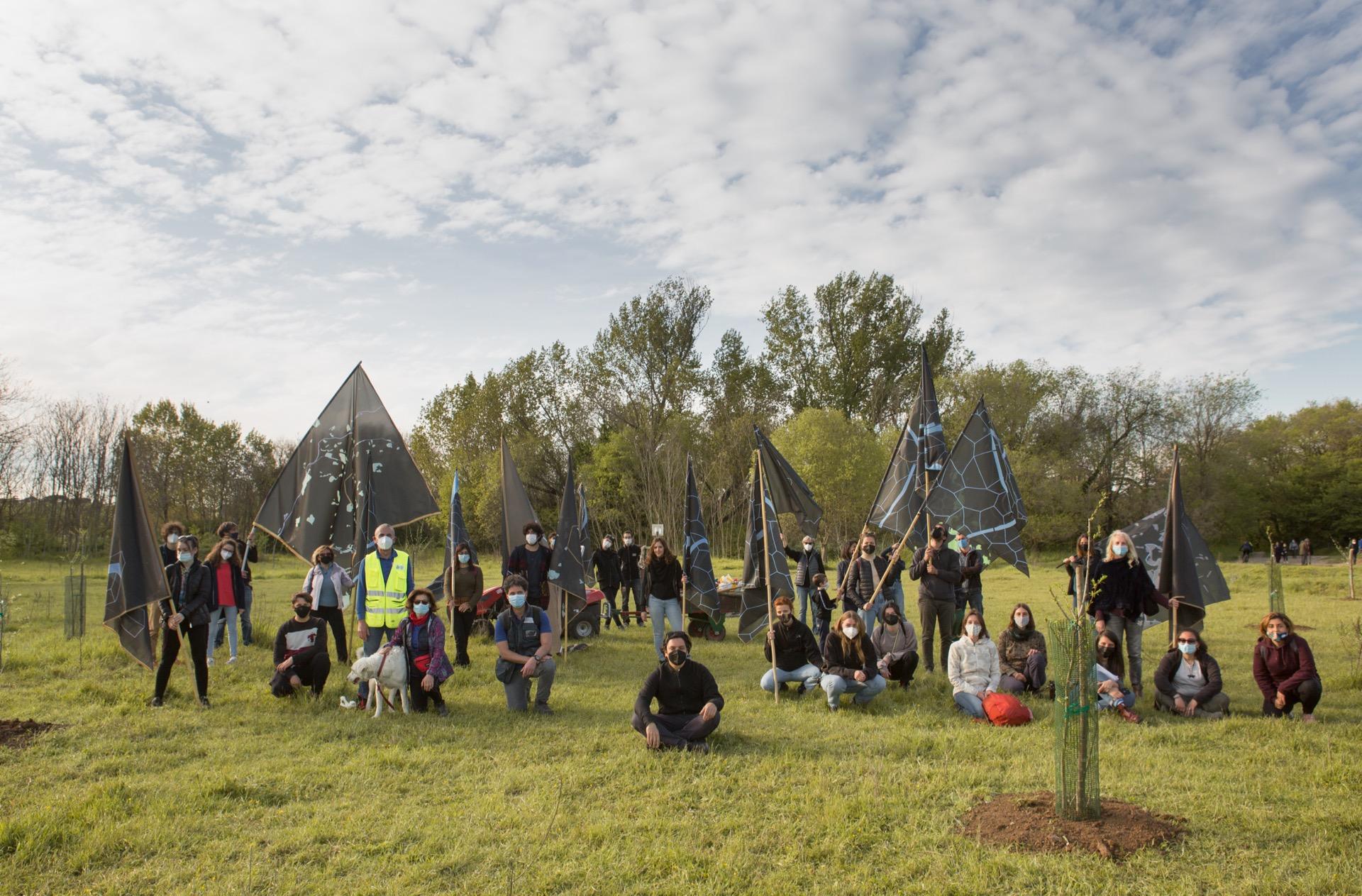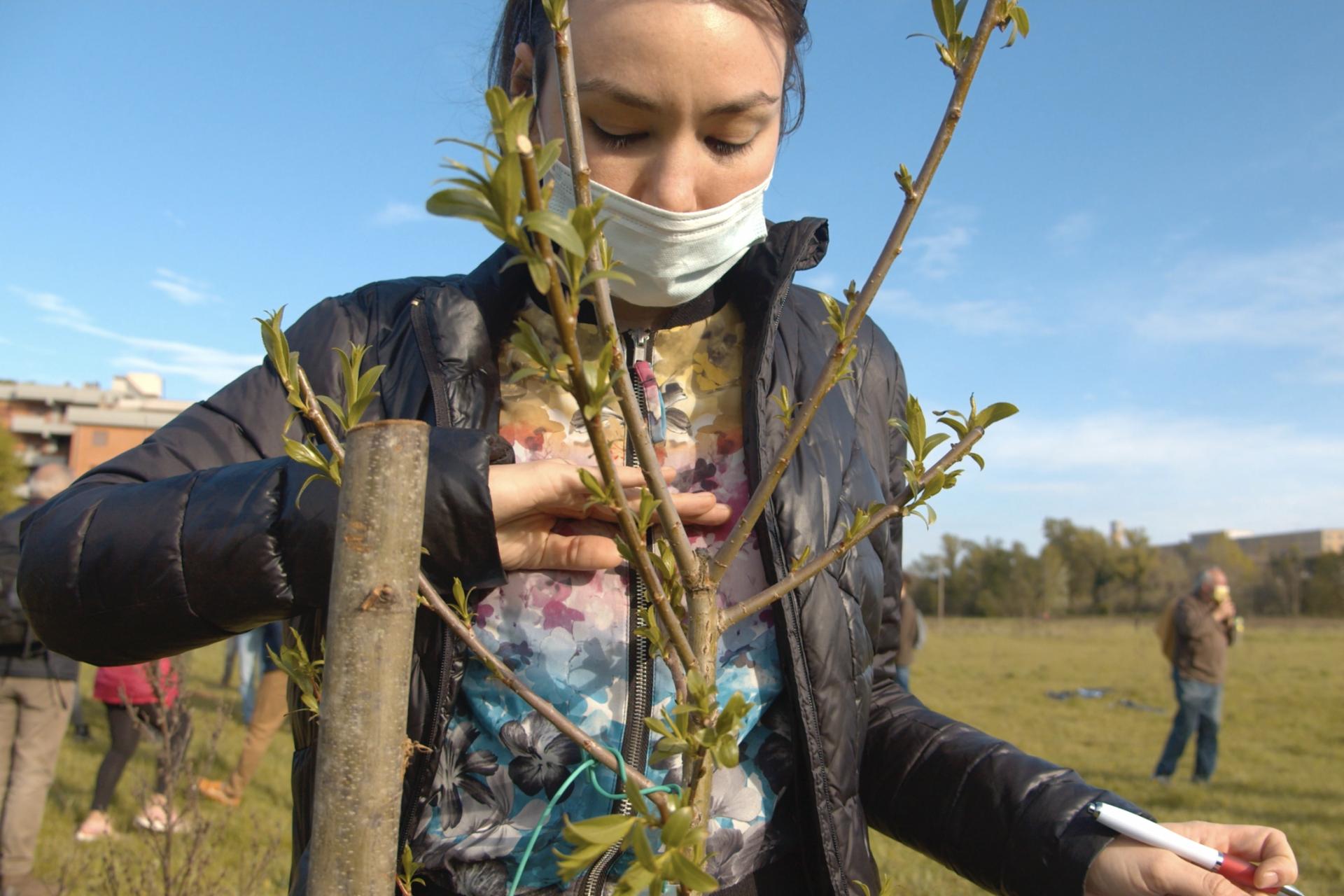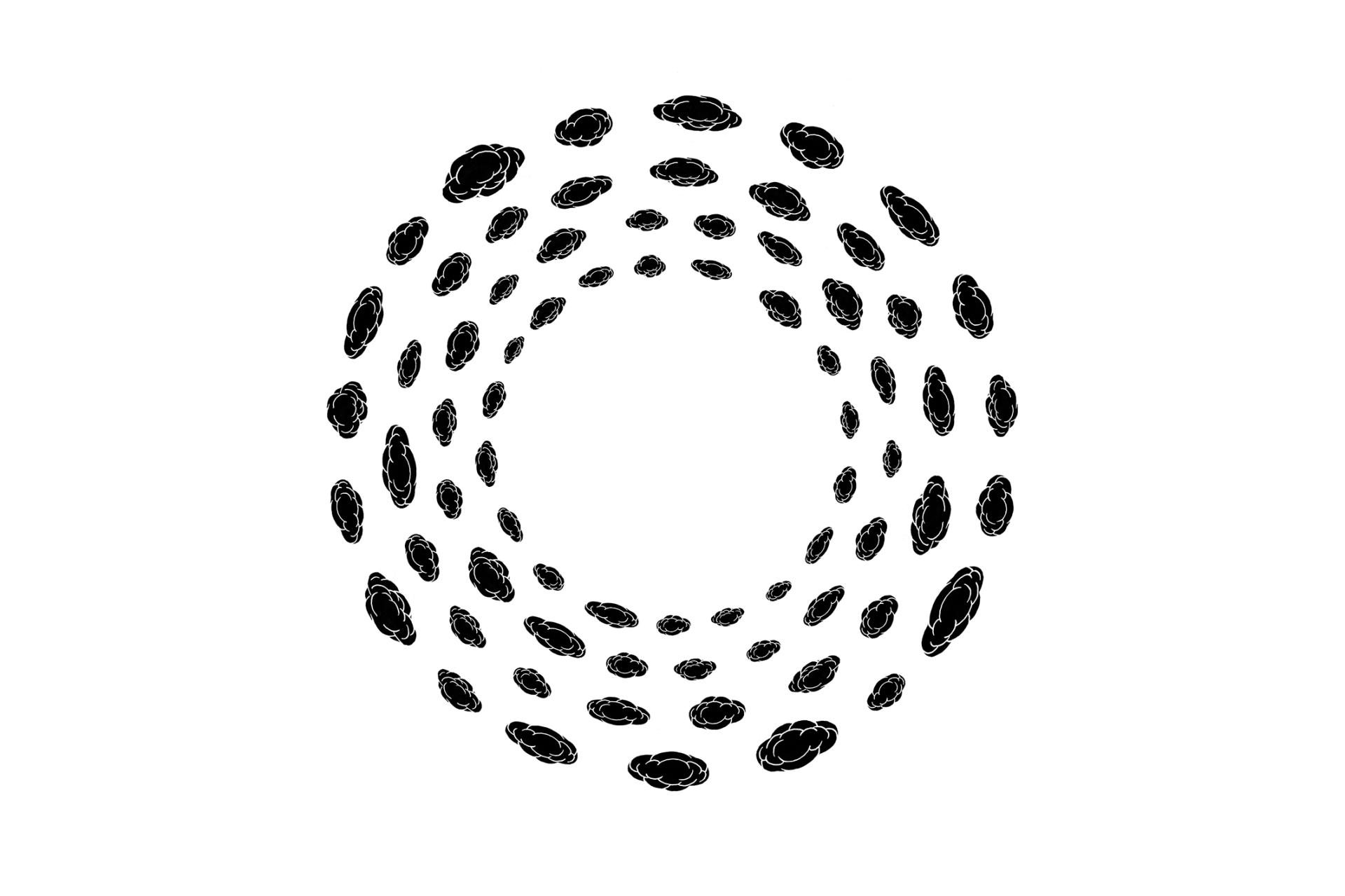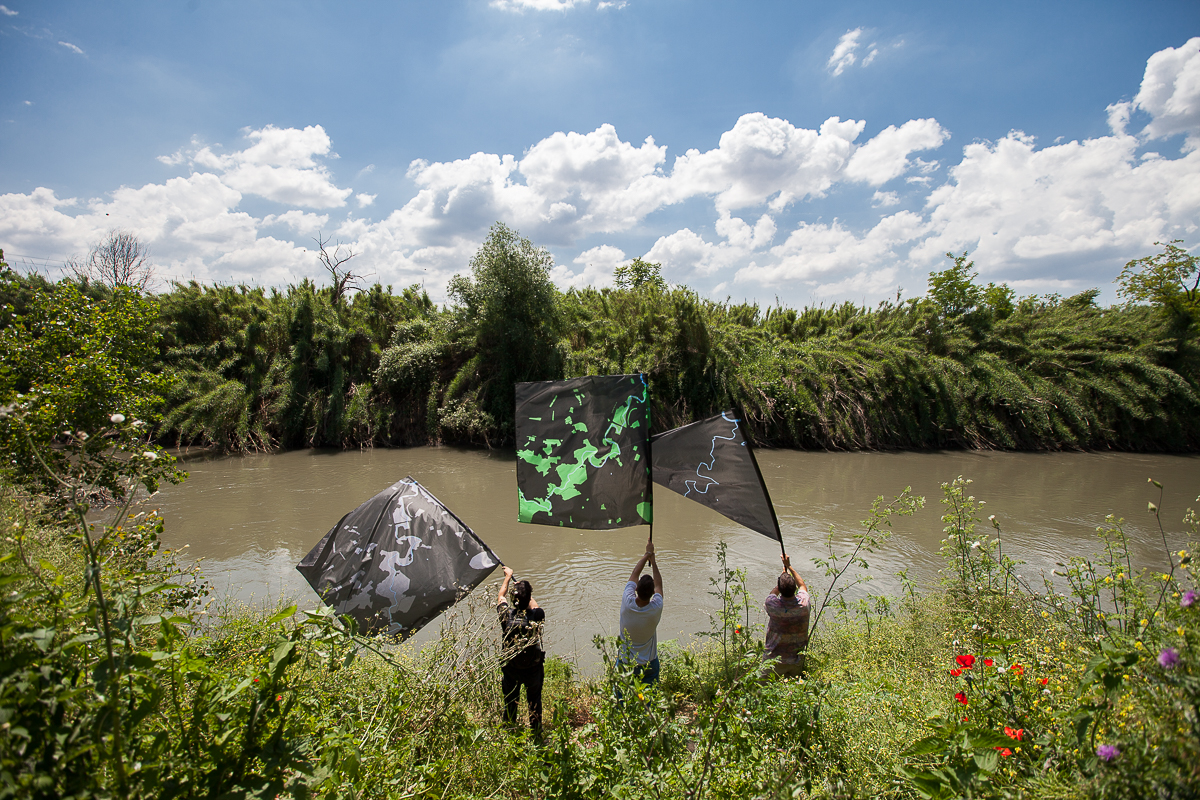Tree classroom
Basic information
Project Title
Full project title
Category
Project Description
The TREE CLASSROOM is an open access circular space made by trees, a place for outdoor environmental education, a Land Art work, a green infrastructure, a climate action, a Nature-Based Solution for Climate Change adaptation and mitigation.
The TREE CLASSROOM is an alternative to the traditional idea of Urban Forestry that has been noted to lack social, economic, engineering and the artistic aspects. TC consider these elements and go beyond the Human-Environment and Nature-Culture relation.
Geographical Scope
Project Region
Urban or rural issues
Physical or other transformations
EU Programme or fund
Which funds
Description of the project
Summary
The TREE CLASSROOM (in italian: Aula Verde) is an art installation, a place to meet and socialize and a climate action.
The idea of TREE CLASSROOM comes from the observation of the trees. The shape of the work, made up of poplar and willow trees, Polulus Alba and Salix Alba, arranged on two large concentric centers with a large diameter that forms a sort of Green Pantheon which can be accessed freely.
The work is alive and over the years it will take shape and as it grows it will return innumerable benefits to the territory. Some of these benefits are currently estimated as Ecosystem services by the researchers involved in the project, who quantified the impact of the Tree Classroom for the redevelopment of the surrounding greenery and on the water, soil and atmosphere compartments.
The TC is a new way to create at the same time socialization, art and climate action. In fact, TC is an inclusive free access space for socialize and for enjoy the beauty of the forest. TC is also a new artistic attraction in town, an artwork in the public space with a strong aesthetics, sign by an artist that for twenty years is constantly working to create new icons for the research on sustainability and the environmentalist campaigning. In conclusion TC is a green infrastructure and a climate action studied and monitored by scientist.
Two TC where already realized in Rome and many others are yet to come in other cities. This is a modular format that can be reproduced everywhere. Every TC is made with a collective performance involving the citizens. After a period of designing and request of Authorizations, the day of the realization comes as a collective joyful event. The citizens, with flags and choreographic gesture are involved in a parade, before starting planting the trees. This experience leaves a memorable trace in the soul of every participants. The images of the parade are a strong example that help to raise awareness on the importance of climate and social justice.
Key objectives for sustainability
The Tree Classroom is studied to be the most sustainable intervention as possible of Urban Forestry.
Firstly, the location ecosystem is studied and then implemented exactly in the way it would propagate in the space. We operate with the Nature Based Solutions approach, where the ecosystem itself is the maximum source of inspiration.
Only trees adapt for the ecosystem will be chosen.
The location for the tree installation is studied on many environmental factors in terms of light, shadows, wind, superficial and underground water flows.
Key objectives for aesthetics and quality
The Tree Classroom is an Artwork itself, inspired also by the Land Art Movement from the seventies, this artwork is different from the previous ones, because is more inspired by the latest research in terms of sustainability. TC is a conceptual work that is also part of the social engage art practices?
Andreco is an artist that since more than twenty years works on social and environmental topics and TC is the last research developed.
The circular shape is present in many culture and traditions, it reminds the rituals and symbolic meanings that are also present during the performance made for the realization of the TC permanent artwork. Arts are able to touch the soul deepest parts.
Key objectives for inclusion
The project itself projected for all kind of people from zero to hundred years old. TC is an open access free space, it is gratis to enter in it, The aim is to let different kind of people meets, to talk socialize and develop new idea in a new Pantheon made of trees. TC can be a place for outdoor education, meeting, symposium, citizen assemblies, art performance, unplugged music and theater.
TC is not only projected for the people but is also made by the people that realize it with a collective performance a small ritual for the ecosystem itself.
The involvement of the citizens in the realization process is crucial for the care of the place and the maintenance that will be undertake also by the citizens involved and their relatives.
Results in relation to category
A interdepartmental group of the La Sapienza University of Rome, made a studied on the impact of the project on a certain number of people that took part at the realization of the TC.
The people has been interviewed before and after the project and the results show the project impact on the group in terms of: Rise of Environmental Awareness, Rise of Knowledge, Rise of emotion, Rise of mobilization for the environment and for the social and common interests.
The project result to be very effective.
Another indirect effect of the project it was evident on the base of the high number of publications and media coverage of the event itself. Press and magazines had a strong interest in the project.
Please explain how citizens and civil society were involved in the in the design and/or implementation of the project. Please also explain the benefits that derived from their involvement. TC is definitely reconnecting people with nature.
How Citizens benefit
TC is not only projected for the people but is also made by the people that realize it with a collective performance a small ritual for the ecosystem itself.
The involvement of the citizens in the realization process is crucial for the care of the place and the maintenance that will be undertake also by the citizens involved and their relatives.
The project can be implemented and replicated everywhere
Physical or other transformations
Innovative character
The TREE CLASSROOM is an alternative to the traditional idea of Urban Forestry that has been noted to lack social, economic, engineering and the artistic aspects.* An understanding of Human-Environment** and Nature-Culture relations is crucial.***
*Vogt, J., Fischer, B. C., & Hauer, R. J. (2016). Urban forestry and arboriculture as interdisciplinary environmental science: importance and incorporation of other disciplines. Journal of Environmental Studies and Sciences, 6(2), 371-386.
**Escobedo, F. J., Giannico, V., Jim, C. Y., Sanesi, G., & Lafortezza, R. (2019). Urban forests, ecosystem services, green infrastructure and nature-based solutions: Nexus or evolving metaphors?. Urban Forestry & Urban Greening, 37, 3-12.
*** Descola, P. (2006, January). Beyond nature and culture. In Proceedings-British Academy (Vol. 139, p. 137). OXFORD UNIVERSITY PRESS INC..
Learning transferred to other parties
The Tree Class room can be implemented everywhere, from a small to a big scale. The TC can be connected each other’s in green corridors and walking or biking circuit, TC are social places for all and are ideal for river parks, areas near the water and the wetlands, but also in any urban and rural environment. The composition of the trees change on the base of the contest.

